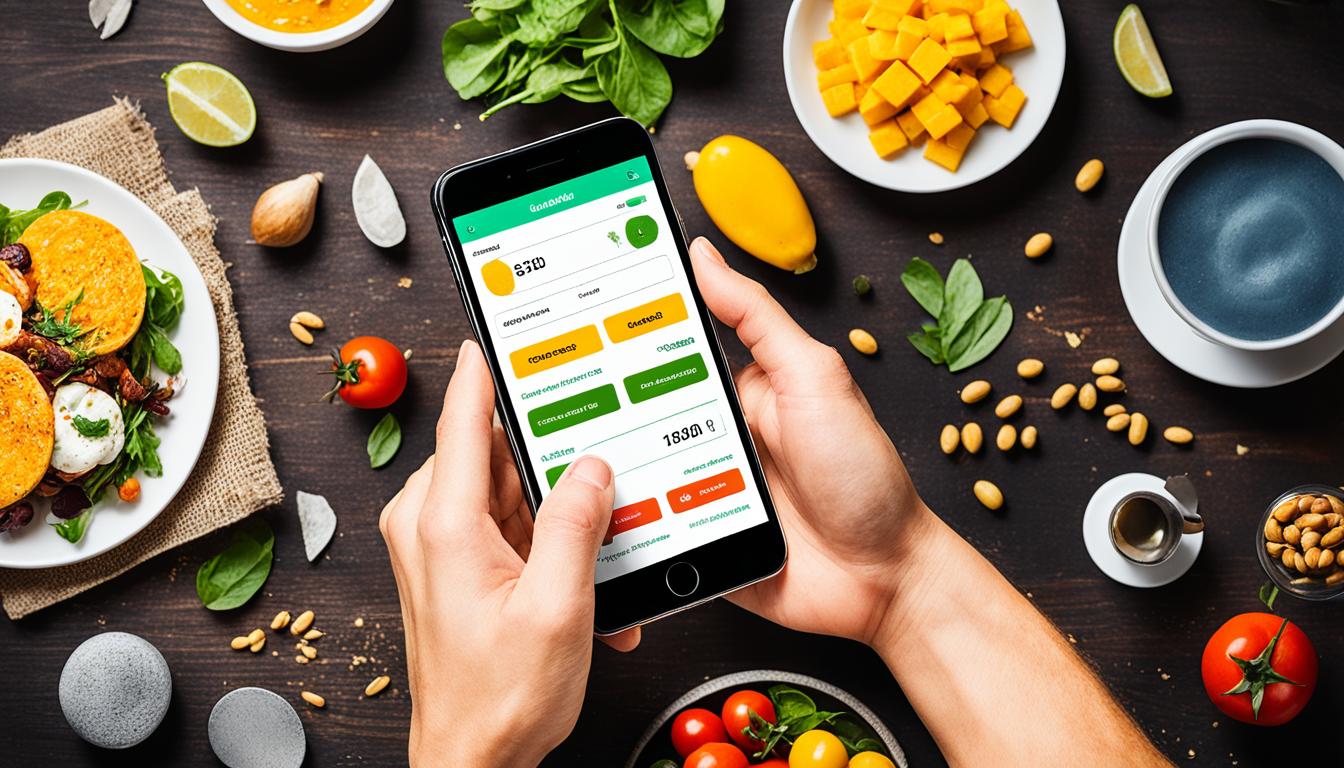In recent years, cashless transactions have revolutionized how businesses operate, particularly in e-commerce.
From brick-and-mortar establishments to online ventures, adopting cashless payment methods has become increasingly prevalent, whether you are just starting your business or already established.
This article explores the significance of cashless transactions in home-based food e-commerce, shedding light on the benefits, limitations, and various virtual payment methods available to online entrepreneurs.
What are cashless transactions?
Cashless transactions refer to payment methods that rely on digital platforms instead of physical cash.
In today’s digital age, cashless transactions have become commonplace and offer numerous benefits to both customers and businesses. To make payments without the need for physical cash, customers can use various digital payment options such as credit cards, debit cards, mobile wallets, and online payment platforms.
With cashless transactions, customers can conveniently and securely make payments electronically. Whether it’s swiping a card or using a smartphone, the payment process is efficient and streamlined.
By eliminating the reliance on physical cash, cashless transactions provide a more convenient and seamless payment experience, allowing customers to transact with ease.
How do cashless transactions work for E-commerce?
Cashless transactions in the e-commerce industry involve several steps. When a customer places an order on your home-based food e-commerce you give various payment options, such as credit card payment, mobile wallet payment, or online payment platforms like PayPal.
The customer selects their preferred payment method and provides the necessary payment details. The payment is then processed electronically, with the funds transferred from your account to your home-based food e-commerce.
This secure and seamless transaction ensures that you receive the customer’s payment without any hassle or delays.

Why Cashless Transactions Matter in Home-Based Food E-commerce
Cashless transactions have emerged as a game-changer for home-based food e-commerce businesses. By offering digital payment options, you can streamline their operations, enhance customer experiences, and expand their reach.
Let’s delve into why cashless transactions matter in the context of home-based food e-commerce:
1. Convenience for Home-Based Chefs
Cashless transactions provide convenience for home-based food e-commerce. By eliminating the need for handling physical cash, you can reduce the risk of errors or loss associated with cash payments.
Digital payment platforms offer accurate and efficient record-keeping systems, making it easier for you to track your sales and manage your finances.
2. Expanded Customer Reach
Cashless transactions offer home-based food e-commerce businesses the opportunity to expand their customer reach.
By accepting digital payments, you can attract customers beyond your local area and reach a wider audience. With cashless transactions, customers can easily make payments from anywhere with an internet connection, allowing you to tap into new markets and potentially attract customers from different regions, even internationally.
3. Enhanced Customer Experiences
Cashless transactions provide a seamless and efficient payment experience for customers. With digital payment methods like credit cards, debit cards, and virtual wallets, customers can purchase with a single tap or click. This simplicity and speed contribute to a positive customer experience, increasing customer satisfaction and loyalty.
4. Streamlined Operations
By adopting digital payment methods, you can streamline your home-based food e-commerce operations. Cashless transactions enable quick and efficient processing of payments, saving you time and effort. With streamlined operations, you can focus on other aspects of your business, such as food preparation and customer service.
5. Enhanced Security
One of the key advantages of cashless transactions is enhanced security. With digital payment platforms, customers’ payment information is encrypted and protected, reducing the risk of fraud or unauthorized access to personal information.
Unlike physical cash, there is no risk of theft or loss associated with digital payments, providing peace of mind for both you and your customers.
6. Improved Accuracy
Digital payments contribute to improved accuracy in financial records and transaction tracking. With automatic recording and documentation of all transactions, the risk of manual errors is eliminated. This simplifies the process of tracking your finances and ensures precise and error-free documentation of your sales and payments.
7. Data Collection
Cashless transactions provide valuable data collection opportunities for your home-based food e-commerce business. Digital payment platforms capture various data points, including customer payment history and preferences. By analyzing this data, you can gain insights into customer behaviour, preferences, and trends. This allows you to tailor your offerings and marketing strategies to better serve your customers, ultimately driving business growth.
8. Customer Preference Alignment
Cashless transactions allow you to align with customer preferences. Many customers prefer the convenience and security of digital payments. By offering various cashless payment options, such as credit card payment, mobile wallets, or online payment platforms, you can cater to these preferences and enhance customer satisfaction.
By meeting customer preferences, you can attract more customers and build a loyal customer base for your home-based food e-commerce business.
9. Environmental Benefits
Another advantage of cashless transactions is their positive impact on the environment. By reducing paper-based documentation, digital payments contribute to a significant reduction in paper waste and resource consumption. This environmental sustainability aligns with the growing global focus on eco-friendly practices and can enhance the reputation of home-based food e-commerce businesses as socially responsible entities.
Virtual Payment Methods for Home-Based Food E-commerce
Home-based food e-commerce businesses have various virtual payment methods at their disposal.
Let’s explore some of the most popular ones and their benefits:
1. Credit Cards
Credit cards are widely used and accepted virtual payment methods. They offer ease of use, better security, and convenience for both customers and businesses. With credit cards, home-based food e-commerce businesses can cater to customers from different countries, as they are accepted worldwide. Additionally, credit cards provide businesses with a transaction history, facilitating tracking and analysis of customer purchases.
2. Debit Cards
Similar to credit cards, debit cards are popular virtual payment methods. However, unlike credit cards, debit cards require customers to have sufficient funds in their linked bank accounts. Debit cards are commonly used for everyday purchases and offer a secure and convenient payment option for customers.
3. Virtual Wallets
Virtual wallets, such as Apple Pay, Google Pay, and Samsung Pay, have gained significant popularity in recent years. These wallets store multiple payment methods, including debit cards, credit cards, gift cards, and loyalty cards. Customers can make online and offline purchases by simply tapping or clicking, providing a seamless and secure payment experience.
4. PayPal
PayPal is a well-known virtual wallet that enables online payments, money transfers, and person-to-person transactions. It is widely accepted by various online businesses, including home-based food e-commerce ventures. In addition to payment functionality, PayPal offers features like invoicing, money management, and financial tracking.
5. Stripe & Razorpay
Stripe and Razorpay are digital payment methods integrated into online businesses. These payment gateways enhance the security of online transactions by storing payment information in a virtual wallet. They provide a seamless checkout experience for customers and are trusted by businesses for their reliability and robust security measures.
6. Payment Gateway
Payment gateways facilitate the secure exchange of financial information between customers and businesses. They are used by businesses of all sizes and across industries. Payment gateways ensure that sensitive financial data is not stored on websites, minimizing the risk of data breaches or unauthorized access.
Electronic Payment Methods for Home-Based Food E-commerce
Apart from virtual payment methods, home-based food e-commerce businesses can also leverage electronic payment methods for domestic and international transactions.
Let’s explore some of these methods:
1. Electronic Funds Transfer (EFT)
Electronic funds transfer is a widely used method for transferring money between banks electronically. It leverages the Automated Clearing House (ACH) network for financial transactions. EFT is commonly used for business-to-business payments and is suitable for both domestic and international transactions.
2. Electronic Check
Electronic check payments involve sending and processing checks electronically. This method is suitable for domestic transactions and offers a convenient alternative to traditional paper checks.
Limitations of Cashless Payments for Home-Based Food E-commerce

While cashless transactions offer numerous benefits, it’s important to acknowledge their limitations, especially in the context of home-based food e-commerce. Understanding these limitations can help businesses make informed decisions.
Here are some key limitations to consider:
1. Customer Preference for Cash Payments
Not all customers are comfortable with cashless payments. Some individuals prefer making payments with physical cash, even if it may be more expensive for them. Home-based food e-commerce businesses that solely accept digital payments may miss out on potential customers who prefer cash transactions.
2. Suitability for Specific Sectors
Cashless payments may not be suitable for all sectors of the economy. Industries such as agriculture, tourism, and hospitality heavily rely on cash payments. Employees in these sectors may not be familiar or comfortable with digital payment methods, posing a challenge for home-based food e-commerce businesses operating in these industries.
3. Internet Connectivity and Technical Issues
Customers can lose access to digital payment methods due to issues with internet connectivity or technical problems. This can result in lost business opportunities for home-based food e-commerce businesses that solely rely on cashless transactions.
Additionally, the processing time for digital payments can be slower, especially during peak periods, which may not meet the expectations of customers who require quick payment processing.
Conclusion
Cashless transactions have significantly impacted the way businesses operate, including home-based food e-commerce ventures.
The advantages of cashless payments, such as convenience, enhanced customer experiences, increased productivity, and reduced costs, make them a valuable asset for online businesses.
By embracing virtual payment methods like credit cards, debit cards, virtual wallets, PayPal, Stripe, and Razorpay, home-based food e-commerce businesses can provide seamless and secure payment options to their customers.
By embracing cashless transactions, home-based food e-commerce businesses can unlock new opportunities, streamline their operations, and deliver exceptional experiences to their customers.
FreshFind is your go to free eCommerce tool, built for home-based food makers. Check us out today and excel your business to the next level.





GIPHY App Key not set. Please check settings